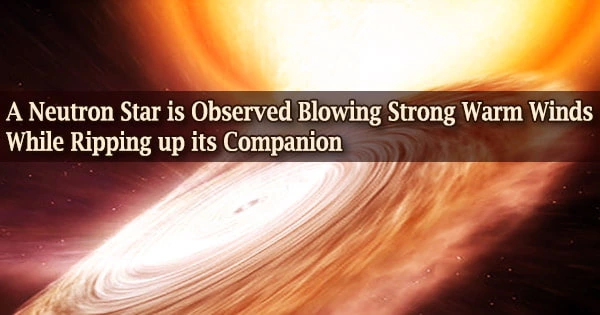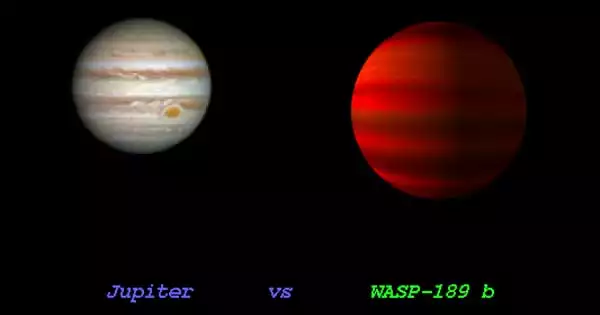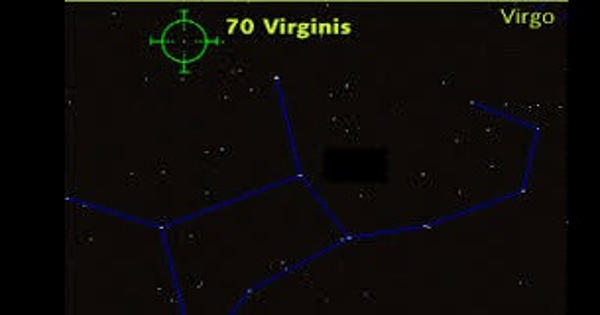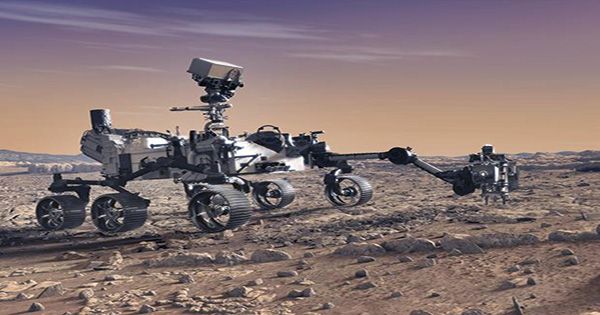A team of astronomers has discovered for the first time blasts of hot, warm, and cold winds from a neutron star as it eats stuff from a nearby star using the most powerful telescopes on Earth and in space. The finding offers a fresh understanding of some of the universe’s most extreme objects’ behaviors.
Black holes or neutron stars are found in systems known as low-mass X-ray binaries (LMXBs). They receive their energy from material that has been ripped from a nearby star, a process called as accretion.
The majority of accretion happens during strong eruptions when the systems substantially brighten. At the same time, disc winds and jets are used to launch part of the material that is spiraling in back into space.
The most frequent indications of material escaping from celestial objects are linked to “warm” gas. Despite this, transient X-ray binaries have only ever been seen as gusts of “hot” or “cold” gas up until now.
A group of scientists from eleven nations, led by the University of Southampton, examined the Swift J1858 X-ray binary’s recent outburst in this new study. They used a variety of telescopes, including the Spanish Gran Telescopio Canarias (GTC), the European Space Agency’s XMM-Newton satellite, the Hubble Space Telescope (HST), and the Very Large Telescope (VLT) of the European Southern Observatory Organization.
The findings, which were published in the journal Nature, revealed that persistent UV signs of a warm wind were present at the same time as optical signals of a cold breeze. This is the first instance of such a system’s winds being observed in various electromagnetic spectrum bands.
Lead author Dr. Noel Castro Segura, of the University of Southampton said:
“Eruptions like this are rare, and each of them is unique. Normally they are heavily obscured by interstellar dust, which makes observing them really difficult. Swift J1858 was special because even though it is located on the other side of our galaxy, the obscuration was small enough to allow for a full multiwavelength study.”
“Only one other system the black hole X-ray binary, V404 Cyg has shown similar properties. However, our attempt to perform the same experiment on that system was unsuccessful, because the eruption ended before we could get the ground-based and space-based telescopes to observe it simultaneously,” co-author Dr. Hernández Santisteban from the University of St Andrews said.
Neutron stars have an immensely strong gravitational pull that allows them to gobble up gas from other stars. The stellar cannibals are, however, messy eaters and much of the gas that neutron stars pull towards them is not consumed, but flung into space at high speed. This behaviour has a large impact both on the neutron star itself, and on its immediate surroundings. In this paper, we report on a new discovery that provides key information about the messy eating patterns of these cosmic cookie monsters.
Nathalie Degenaar
Swift J1858, a recently found X-ray transient event, exhibits significant fluctuation over the electromagnetic spectrum, which provided a unique opportunity.
“All the astronomers in the field were incredibly excited, to the point that we combined our efforts to cover the full spectrum, from radio to X-ray using state-of-art observatories on Earth and in space,” Dr. Castro Segura continued.
Co-author Nathalie Degenaar, from the University of Amsterdam added, “Neutron stars have an immensely strong gravitational pull that allows them to gobble up gas from other stars. The stellar cannibals are, however, messy eaters and much of the gas that neutron stars pull towards them is not consumed, but flung into space at high speed. This behaviour has a large impact both on the neutron star itself, and on its immediate surroundings. In this paper, we report on a new discovery that provides key information about the messy eating patterns of these cosmic cookie monsters.”
“This time we had cosmic luck on our side, as we were able to co-ordinate ten telescopes and point them towards the J1858, all while it was fully active. This allows us to obtain much more information since we can use different techniques at different wavelengths,” Dr. Hernández Santisteban said.
Dr. Degenaar added, “designing such an ambitious observing campaign built around the best telescopes on Earth and in space was a huge challenge. So, it is incredibly exciting that all this work has paid off and allowed us to make a key discovery that would not have been possible otherwise.”
The crew was able to investigate the temporal evolution of the gas that flows out in addition to learning about the various types of winds. They discovered that the strong changes in the system’s brightness had no effect on the warm wind. Prior to this, the absence of such a response had been predicted theoretically but had not been verified using advanced simulations.
“In this research we combined the unique capabilities of the HST with the best ground-based telescopes, such as the VLT and GTC, to obtain a complete picture of the dynamics of the gas in the system, from the near-infrared to ultraviolet wavelengths. This allowed us to unveil for first time the true nature of these powerful outflows,” Dr. Castro Segura said.
“The new insights provided by our results are key to understanding how these objects interact with their environment. By shedding energy and matter into the galaxy, they contribute to the formation of new generations of stars, and to the evolution of the galaxy itself,” Dr. Castro Segura concluded.
Grants from agencies including the Science and Technology Facilities Council (STFC) and NASA funded the study among others.
















